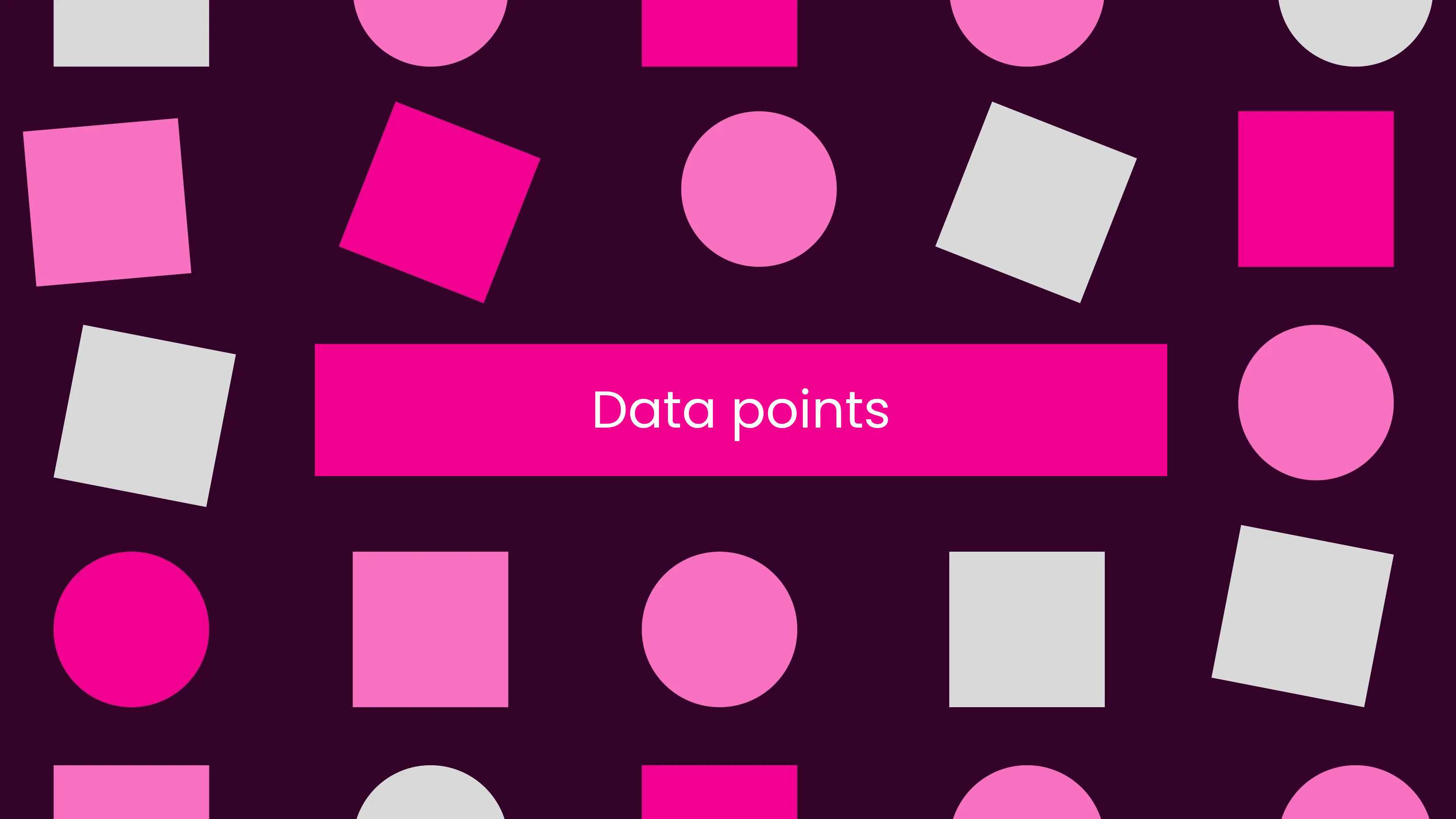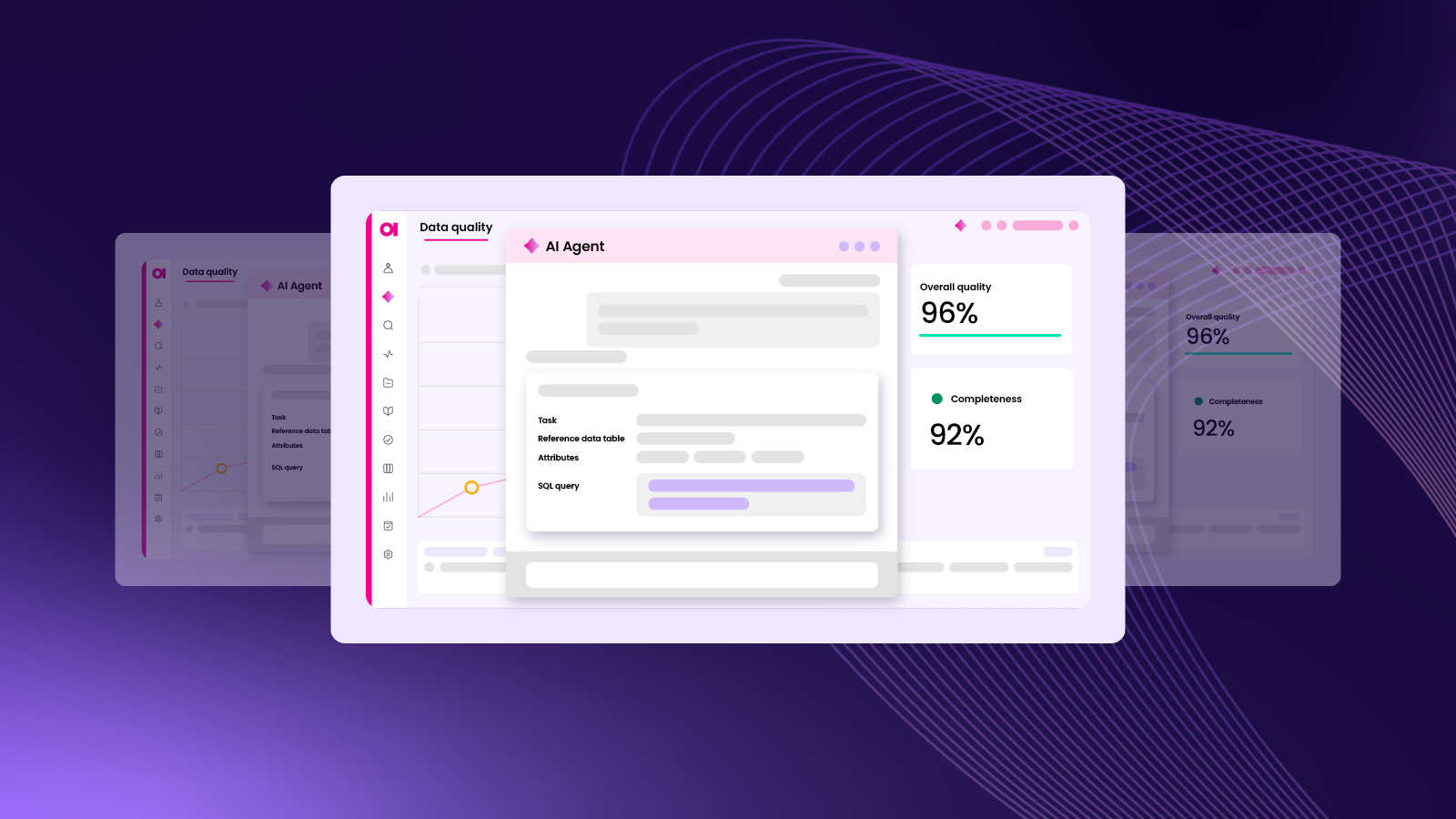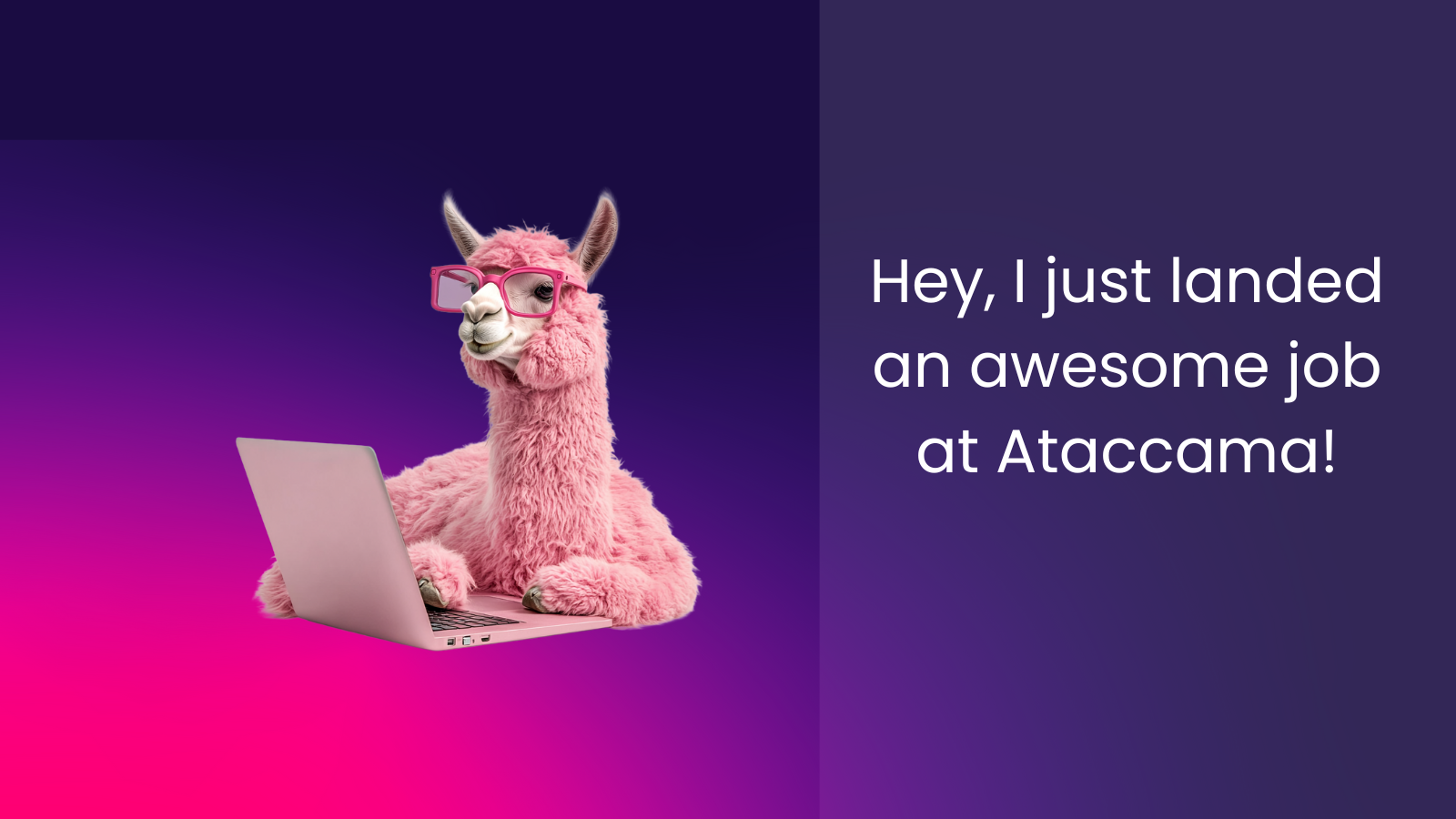At Ataccama, we build a powerful platform that helps our customers deal with many data-related challenges. But unless you had to deal with those issues yourself and unless you tried to solve them at scale the way our customers do, the business and technical lingo might not mean much.
So let’s skip the buzzwords for a second and start simple. No code. No jargon. What does the Ataccama platform actually do?
Imagine you have a piece of paper...

It could be anything, like your shopping list, a form you filled out to enter a contest, a random page of notes, or even a letter you forgot to send. Those words, numbers, names, or scribbles on a page - that’s data, even without any computers or databases or information systems.
And if this one piece of paper is all there is, you don’t have much need for any complex software. You just look at it and recognize, for example, that it’s a shopping list. You check the handwriting to see if you wrote it or if someone else did, and you check if it actually contains some meaningful information you would expect from a shopping list. You notice the typos but correct most of them in your head as you read the list, and in the end, you put it on the fridge because that’s where the shopping list belongs. And then you can grab it when you need it.
But what if there are hundreds of boxes with thousands of papers with millions or even billions of sentences and words stacked all around you?
Making sense of all of this
Before you can do anything with all that information, you need to understand what’s on the page. Is it actually a shopping list or a page from your diary that belongs in a locked box so no one else can read it?
So you take a glance at each paper, looking for patterns and keywords. There are addresses written on this paper, and this one has phone numbers on it, another has names, or quantities of items you want to buy. You do what we call a data discovery with those pages to see if you can determine what it is and where you should put it. You can use sticky notes with different colors to label each page, so that when you want to find all diary pages, you can simply look for the right color. And to make sure others know what color means what, you write it all down in a business glossary.
In the end, the goal of all of this is just to put papers where you and others can easily find them. And in reality, we don’t actually move the papers around because those boxes are not necessarily ours, so we just write down where everything is and where to find it in a notebook and call it a data catalog. You know, like a catalog of products from your favourite store.
What if the data is wrong?
Now we know what is or should be on each piece of paper. But is it… correct? If you grab that shopping list from the fridge and go to the shop, will you return with everything you actually need?
You can start spotting patterns. Is the same item written multiple times? Do you know which aisle to find each item in? Is there a price for each one so you know how much money to bring? You profile the data, looking for obvious irregularities or mistakes.
But you can do better. Are the prices within an expected range? Eggs surely don’t cost $100. Does the shop actually have aisle Q when it only has six? And are you really expected to buy a new car when grocery shopping?
So you make a list of questions to check these things - is each line valid, or complete, and does it even make sense? Then you go through the list item by item, ask those questions, and count the results. That not only tells you something about the data quality of your list, but it’s also something you can repeat with next week’s list to see whether things have improved or not.
But is this enough?
Sometimes. But you can probably guess it can get much more complicated. These questions - we would call them data quality rules - could be different for each paper, but they could also repeat because you will be expecting similar (or even the same!) pieces of data on different papers. And even just figuring out the right question to ask may not be as easy as in our example.
One thing you may already wonder about is whether you even know where these papers come from. Who wrote them? Are some of them handwritten copies of each other, or maybe one is a draft and another one is the final version, like taking the address book and writing down on a separate paper all the people you want to invite to a party? Your friend wrote that down and handed you the paper, and you see the phone numbers are missing. Did they just forget to write them down, or are they actually missing from the address book? Understanding how the data moves between the papers and how it’s supposed to move between the papers is why we care about the data lineage.
And then we can take a step back to see if your friend has actually sat down and written the list as you agreed, or if the printer that is supposed to fill one of those boxes is working. Maybe your friend is late, maybe the pen is not working, or maybe the door is locked and your friend can’t come in. Or the printer got a bit crazy and started printing white pages. But if you know what is supposed to happen, you can notice these problems and do something about them right away, not just when you start reading the blank page and wonder what went wrong. That is what data observability is here for.
So now we know what the problem is, but what now?
Well, of course, we can try to fix the problem! Sometimes it’s enough to just tell someone that their piece of paper contains some errors, maybe they didn’t know until we actually went through all of the above, and they are really glad someone told them. But in some cases, it may not be that hard to fix it ourselves.
In this paper, there is an address and it says: ‘Nwe York’, and on that paper, someone wrote down a phone number to this German company, but it’s missing a country code. And there is an omelette recipe, but no eggs! We can fix those errors, and sometimes we can even write down how to fix those errors so others can do it as well. And whether it’s us correcting the papers or we let someone know, we contribute to a data remediation process, making sure that the papers we will end up reading or using have the best possible data in them.
We may even end up with more papers, written by us and with the correct data in them, just to make sure we have the right information available whenever we need it.
So we start writing our own pages, not just reading those in the boxes?
Exactly! We will just use a special box for that to make sure not everyone can write on those new pages, and we can rely on them.
For example, we can have all the different words we use for ingredients. When we go through a recipe, we can double-check it uses those correct words. We can spot typos and fix them, or remove things that don’t belong. We can even create a dictionary, translating those words from different languages - so if we see ‘Ei’, ‘œuf’, or ‘huevo’, we can just rewrite it as ‘egg’ so no one gets confused. And we will call these our reference data.
Or remember that address book with your friends’ names and phone numbers, and so on? That sounds like important information, doesn’t it? So if there is an address book, and list of party attendees with contacts, and papers from a raffle where people wrote their own names and phone numbers, we can take all of that, compare them to each other, and compile it into the best possible and most up-to-date list. And that will be our master data. Whenever there is a name somewhere on our papers - maybe on a signed note or maybe an invoice - we will know exactly who that person is and where else we have encountered them.
All of that sounds like a lot of work
It is! Or it would be if we really just managed heaps of paper in hundreds of boxes manually. But apart from the obvious difference - that Ataccama is a software that can automate many of those tasks and do them very fast at scale - there is one big ace in our sleeve, and that’s AI, specifically Agentic AI. Remember that friend who was writing down the names for the party, or how you had to figure out what questions you should even ask when reading through the shopping list? Maybe there is someone else who could listen to what you need, figure out what needs to be done, and then… do it - sometimes on its own and sometimes collaborating with you. Well, that someone is the AI Agent, your personal robot helping you with all those boxes, papers, and pieces of information we call data.
So… what do we actually do at Ataccama?
We help companies with everything we just talked about above. But they don’t have boxes with paper, they have information systems, databases, cloud storage, big data clusters, ERPs, CRMs, BI tools, and so on and so forth. We help them make sense of their data - understand it, evaluate it, monitor it, clean it, trust it, and use it confidently.
Not just for the sake of it but to understand their customers better, to optimize their production processes, to make better decisions next year. And ultimately, we do it to improve the lives of our customers’ customers - you! - so you can get better service, better products, and better value for your money.
Our platform, Ataccama ONE, brings all these capabilities together into one smart, powerful solution.
Why It’s a Great Place to Work
And we’re not just building software - we’re building a culture that’s bold, curious, and people-first. With 550+ teammates from 40+ nationalities, we’re united by a few key values:
- ONE Team
- Aim High
- Candid & Caring
- Customer Centric
- Challenging Fun
Our values are not just a bunch of buzzwords, but we actually live them and recognize each other through the L’Amazing Ataccamers program. We believe in solving real problems with real impact. And having a good time while doing it.
Thinking of Joining Us?
If you love solving complex problems in simple, smart ways - and doing it with people who care - Ataccama might be the place for you. Check out our openings, perhaps you will find your playground?
Because behind all those big data terms and smart tech, we’re really just a bunch of curious Ataccamers.

